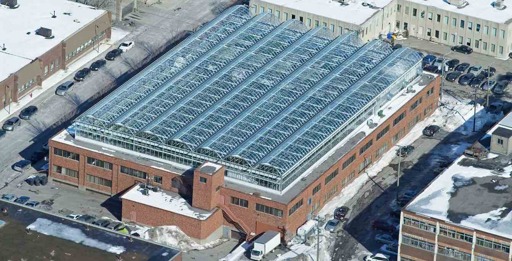Lufa has a pretty good concept. We used them for a while, in the middle of the pandemic, before we moved out of their coverage zone. Decent amount of dropoff points, we got a big reusable tub full of stuff every week. The pricing was comparable to buying at the grocery store, but the stuff was generally much fresher.
How big is a fucking football field?
Which type? CFL fields are bigger than NFL fields, and a football/soccer field is the same size as an NFL field or larger
The one where all the players are attached to poles and someone else spins the poles and it makes the players rotate along the y axis so they can kick the ball
Roughly 1.5m × .75m based on the last time I saw one in person over a decade ago? So I guess in freedom units that’s a full grown Golden Lab not including it’s tail by 2-3 footballs
I think they mean normal football. Defer to FIFA
Are there any downsides? The company has been around for a while, and they’re still going, so why isn’t this type of farming done everywhere? It could significantly strengthen food security, and would make fresh food more easily available.
It requires building the structure under the greenhouse specifically to support the weight of the greenhouses themselves, plus all the plants, equipment, substrate, and water, plus workers.
Your average existing large-footprint building simply isn’t built to hold that weight - maybe a couple feet of snow - and would need to be heavily remodeled to accommodate it. It also adds a lot to the cost of building new structures, so it’s a sizable investment in either case.
Idk if you’d call that a downside, but that’s why this sort of thing isn’t everywhere.
That is a very good point from the technical aspect of pulling it off.
Sounds to me like bylaws need to be put in place for new development of large area buildings to be structurally sound enough to support these greenhouses, solar panels, and whatever else the future will require to make society better.
Builders should have enough incentive to do this without new bylaws needing to force them to.
Have you seen the state of the development in this country? Builders would replace the walls with cardboard to turn more profits if the law would let them. They definitely need more incentive.
Greenhouses are not that heavy. Snow load on flat roof can be heavy AF, and Montreal code would need to handle more than 2 or 6 feet. Greenhouses on top of building can also use outside building supports.
If people lose the fear of starvation to motivate their contributions to the capitalism machine, then what??? How dare you try to destabilize our massive profits with something as heinous as accessible food!!! /s
Is that 3 American football fields?
Right!? I mean, come the fuck on! Use real measurements.
Canadian, duh.
Must be because other football fields aren’t standardized (at least if Ted Lasso didn’t lie).
Im sure they meant Canadian football fields.
An interesting redemption arc for big box stores. I wonder if it would ever be implemented.
I wonder if it would ever be implemented.
What do you mean? It’s already implemented. You’re looking at a picture of it.
Sorry, I suppose I was unclear contextually. Implemented on big box stores in the US. Like, all of them.
Ah you mean implemented large scale across the country. Gotcha.
It does not specifically say what it grows. I sorta wonder what ones make the most sense. I imagine ones where shipping is a big chunk of the cost. Personally I would love greens coming from something like this in my city because of how easy we seem to get those contaminated from runoff in traditional farming but then also parsnips for some reason are sorta expensive. would love something that could get this healthier carb alternative cheaper.
Lufa is operating on a quasi-subscription model. If you sign up with them, they have a weekly basket of veggies and fruit coming your way. You can either custom tailor this basket three days in advance or you can just let them send you whatever they have. The contents vary seasonally. Their greenhouses usually grow tomatoes, cucumbers, zucchini, lettuce and kale derivatives, microgreens and herbs. You get charged on a per basket basis and the empty baskets have to be returned to them (usually they take empty ones at next week’s Drop-off).
With the weekly baskets they can gauge demand pretty well.
Anecdotal: If I lived alone or with another omnivore like me, I’d be happy to keep the baskets running either with whatever Lufa puts into it or with some micro managing. Alas I live with three girls, two of them being really picky eaters. When we had the weekly basket running, we actually produced a lot of waste, because I alone was not able to consume its contents or plan dishes around it that they would consume.
ok so its like the farmers market thing. Why do they vary though? I would think a greenhouse could grow anything year around.
Why do they vary though?
Presumably based on the different lengths of growing cycles for different plants.
There may be more tomatoes ready for harvest this week, and more kale ready next week.
And customers may request more or less of certain things at different times of the year.
I’m sure they try to match harvest schedule and demand as closely as possible, but plants and customers don’t always operate in a perfectly predictable manner.
im sorta jelly now as it sounds pretty awsome. I hope the model spreads to toronto and then over to chicago.
To add onto what the other commenter responded with, Lufa doesn’t just provide their own produce from their greenhouses. They also supply local produce and products from all around the region, including going as far as Lac St Jean region and Eastern Ontario for stuff that is made locally. Some is greenhouse, some is seasonal.
Outside of this, it sources citrus from small growers in Florida for example.
ok. thats kinda a downer. I was like wow. they are growing all these neat things in the city.
I think the farm to table aspect is great though, even if they act as an intermediary.
They also have a minimal packaging philosophy. The stuff that comes in the crates is often either in paper bags or not packaged at all. So you get
Seems like an awesome idea to me. Would love to see this grow!
How many squared bananas is this? I’msorry, but I fail to do the math.
I had a recent discussion with an AI about climate collapse resilience in Canada and Montreal came up as a potentially resilient city if only it sorts out its food. So this is a step towards that.






